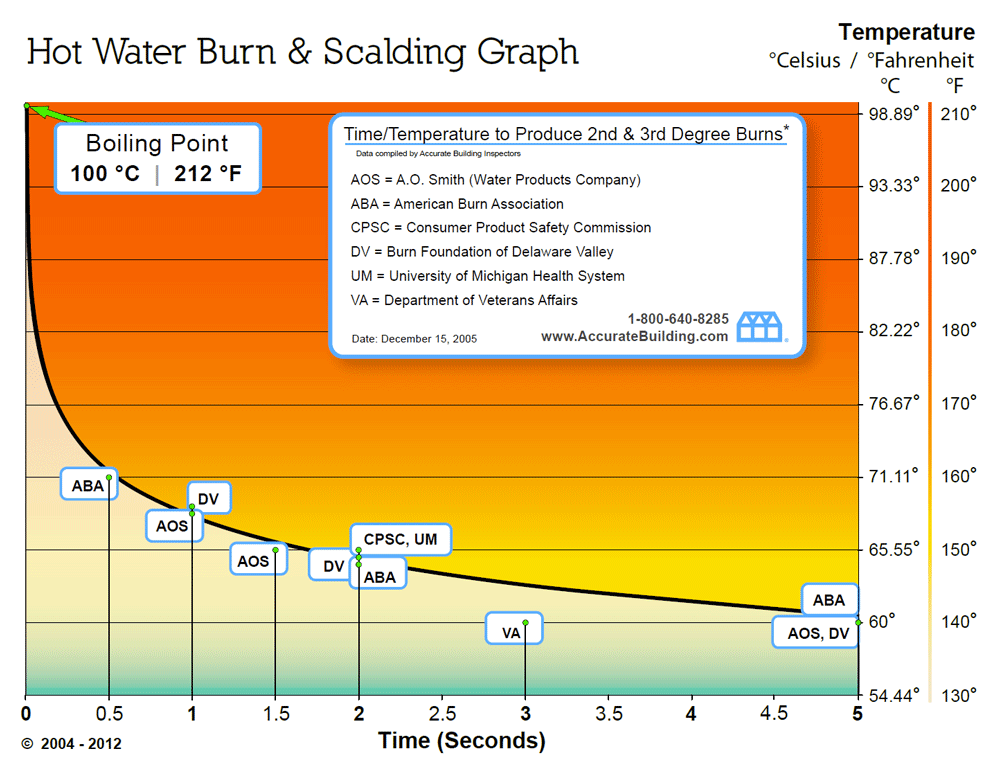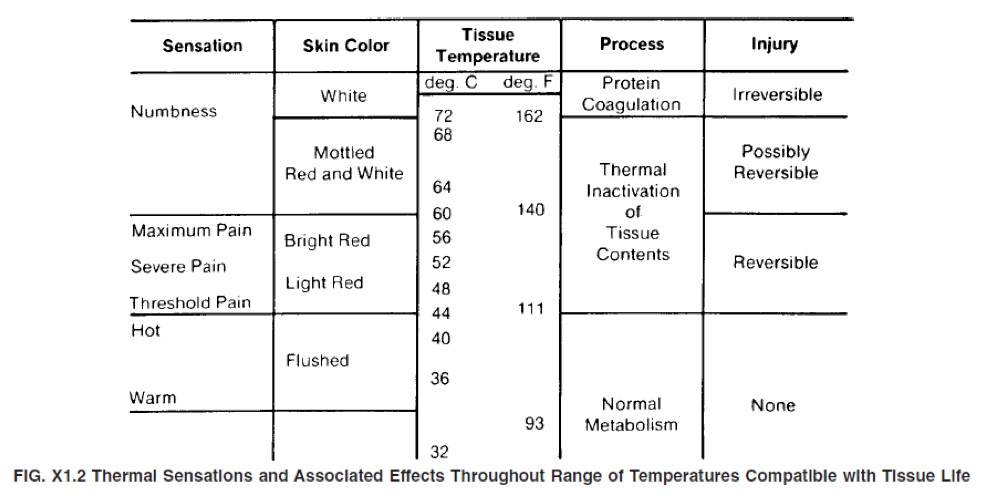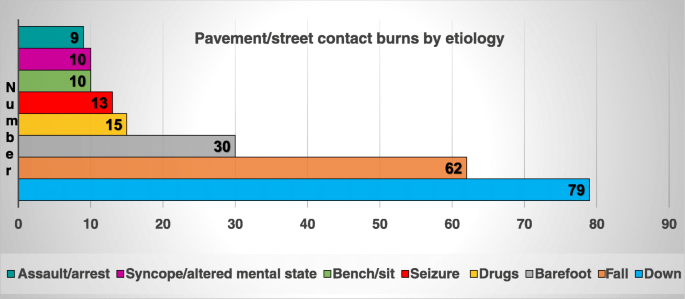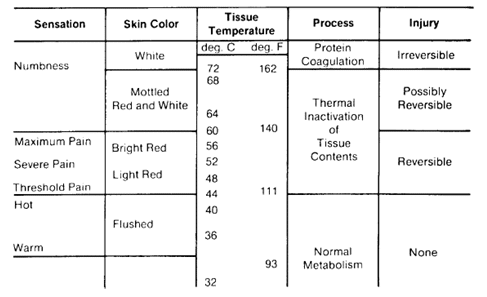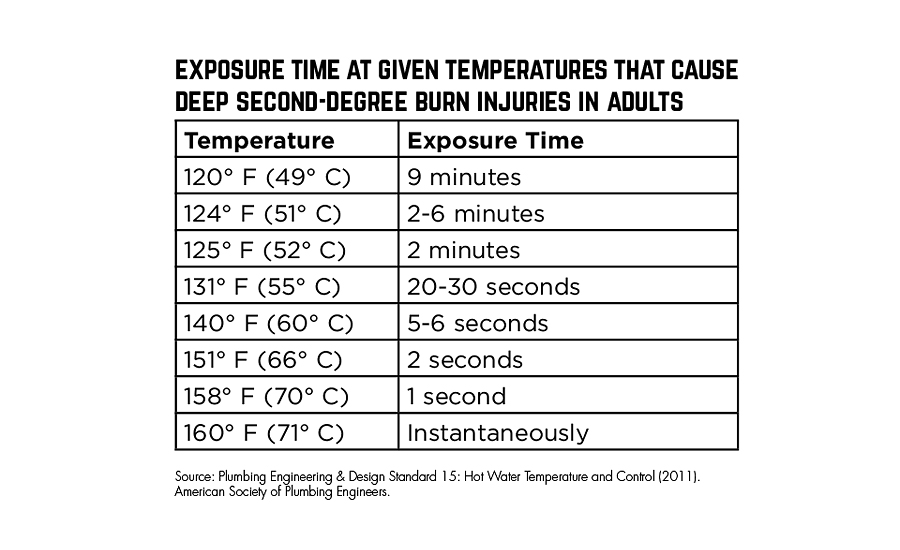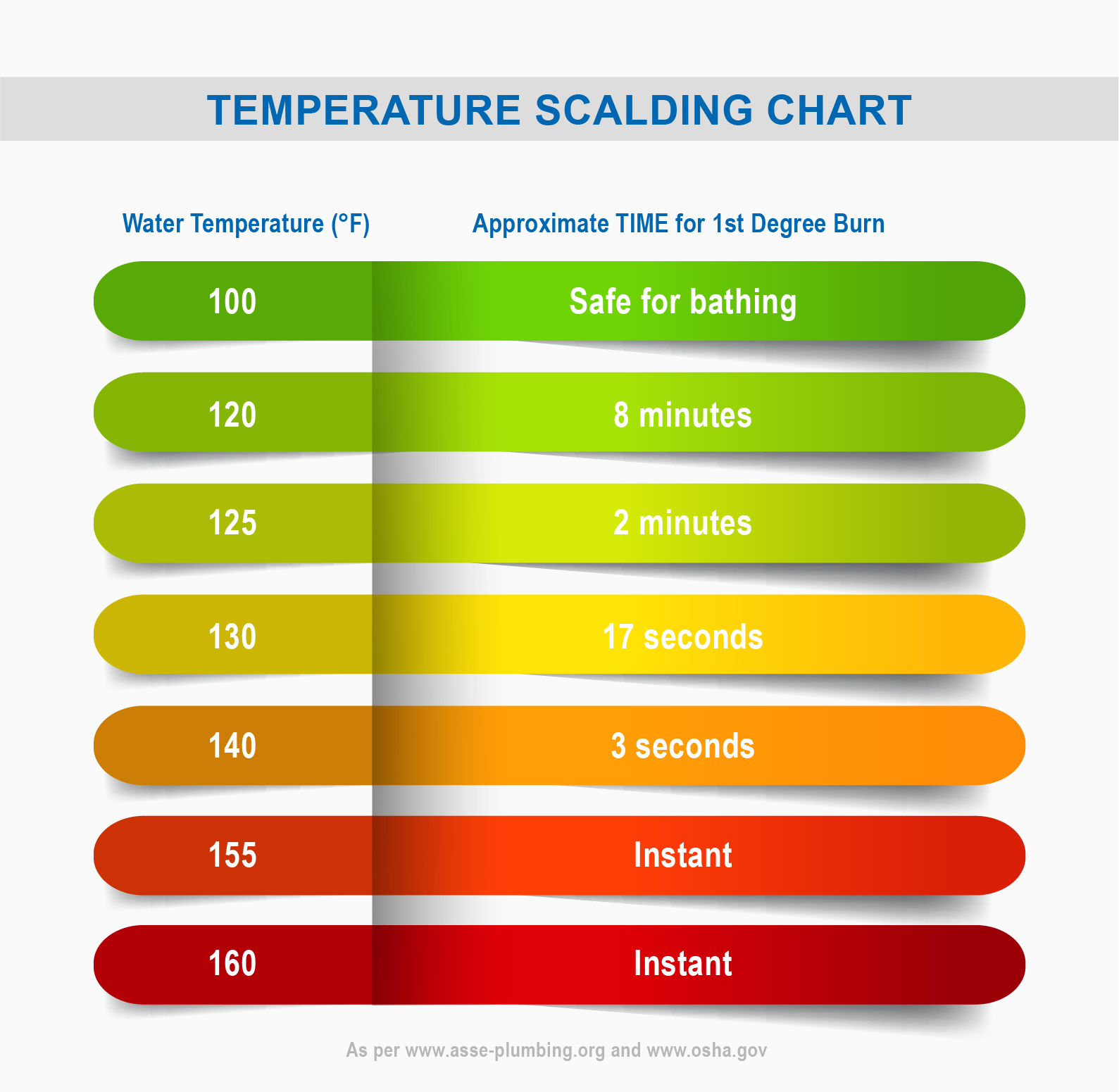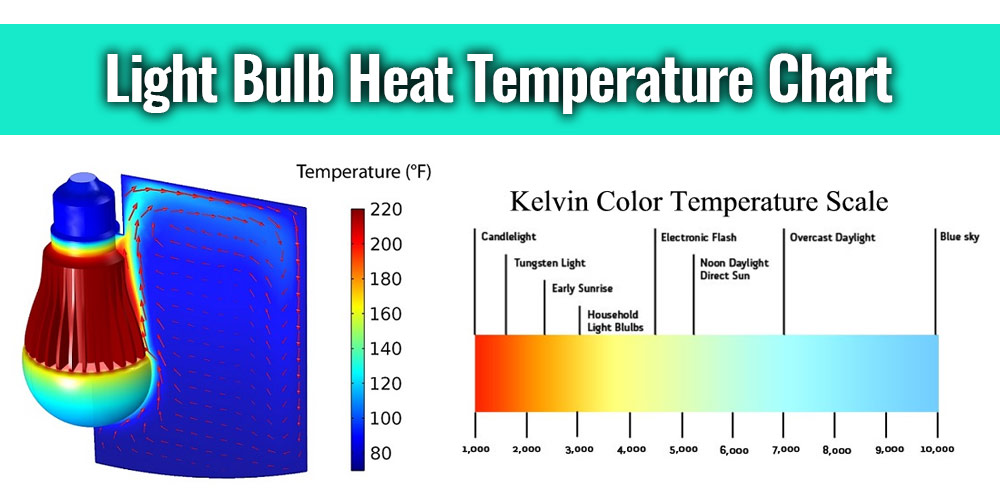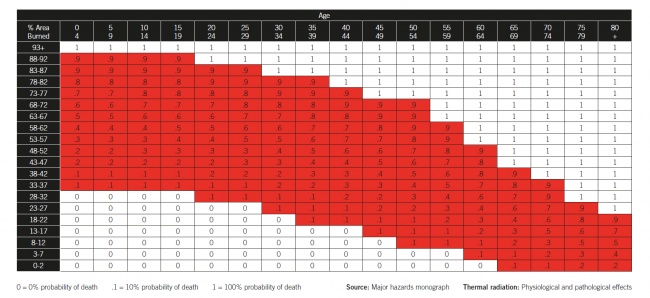Skin Burn Temperature Chart
When the basal layer of the epidermis reaches 44C burn injury occurs.
Skin burn temperature chart. Xxxxxx Estimating the time and temperature relationship for causation of deep-partial thickness skin burns. A high temperature more than 80 degrees Celsius can cause more severe burns in a very short period of time less than a second. ASTM C1055 the Standard Guide for Heated System Surface Conditions that Produce Contact Burn Injuries recommends that surface temperatures remain at or below 140F.
8 rows If You Burn Your Skin. A burn is damage to your skin caused by a temperature as low as 44 degrees Celsius 1094 Fahrenheit for a long time. 2 nd Degree Burn No Irreversible Damage.
The reason for this is that the average person can touch a 140F surface for up to five seconds without sustaining irreversible burn damage. As an example the chart indicates that a hot spot that causes the skin to attain a surface temperature of 60C can produce first degree burns after approximately 3 seconds. The skin was assumed to be opaque so as to simplify the analysis of the problem.
This is indicative of irreversible burn damage and is so severe that the pain can be replaced by a feeling of numbness. When the temperature of a hot liquid is increased to 140o F60o C it takes only five seconds or less for a serious burn to occur1. Scalds are commonly caused by accidental spilling of hot liquids having water temperature too high for baths and showers steam from boiling water or heated food or getting splattered by hot cooking oil.
Beyond 70C rate of damage is so rapid that interpretation can be difficult. Note that as temperatures rise burned skin tissue can actually become white. Scalding is usually a first- or second-degree burn and third.
Scalding is a type of thermal burn caused by boiling water and steam commonly suffered by children. Even though a water temperature of 110 F is relatively-safe exposure can be painful. As the emissivity of human skin is 094 17 this assumption produces only slightly higher surface temperatures and slightly lower temperatures at depth and therefore burn damage than with actual diathermanous skin.
More severe burns occur at higher temperatures. That relates contact skin temperature to the time needed to cause a burn. For superficial dermal burns the rate of tissue damage increases logarithmically with a linear increase in temperature.
An applied heat of 131 degrees Fahrenheit causes second-degree burns on exposed skin. As the chart reproduced below reveals the severity of a burn is a function of the temperature of the water and the duration of the exposure and the condition of the skin. However burning people does not bode well for our product so its important to set temperature limits where people will touch the product.
Many system designers set their products skin temperature limits based on onset of damage to a person. At this temperature the skin of adults requires an average of five minutes of exposure for a full thickness burn to occur. At 118 degrees human skin can sustain first-degree burns.
Human skin is destroyed when temperatures reach 162 degrees. Often this standard is used to gain as much computational performance as possible. 3 rd Degree.
Humans begin to feel a burning pain when skin temperature rises to 111 degrees Fahrenheit with first-degree burns developing at 118 F. At 118 degrees human skin can sustain first-degree burns. A second-degree burn injury can occur at a temperature of 131 degrees.
Human skin is destroyed when temperatures reach 162 degrees. Pain receptors overload and become numb at a temperature of 140 F. A second-degree burn injury can occur at a temperature of 131 degrees.
The chart below breaks down how skin reacts when exposed to surfaces at varying temperatures. The human pain threshold is around 106-108 F. Highlights b urns xxx 2015 xxxxxx 1 2 3 Burns xxx 2015 pp.
Approximate Time and Temperature Relationship to Severe Burns in.
